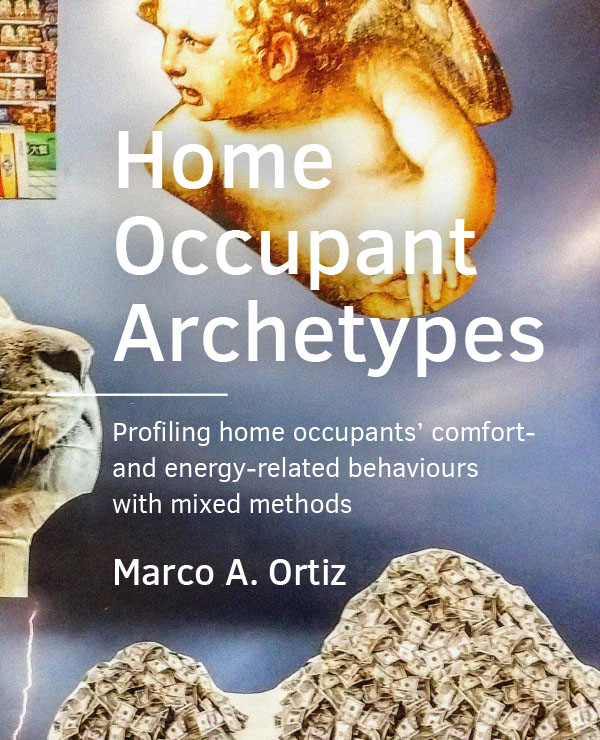Introduction
DOI:
https://doi.org/10.7480/abe.2019.13.4153Abstract
People spend about 60% of their time in their homes: environments in which the person should feel comfortable and be healthy on account of the technical services and systems in their building (Jia, Srinivasan, & Raheem, 2017). The supply of a comfortable environment should be achieved in an energy efficient way, especially if we are to achieve the EU 2020 or 2030 targets of residential energy consumption. However, in spite of the technological advancements and energy efficient technologies that have already been developed to provide comfort, energy consumption is not decreasing at the rate it should (Tsemekidi Tzeiranaki et al., 2019). There are several complex factors affecting energy consumption of which occupant behaviours is one of them, and building systems, services, and products being some of the others. Moreover, the indoor environmental quality (IEQ) field seems to focus mainly on the thermal and other physiological aspects of comfort and energy expenditure. Yet, collaboration of the IEQ field with the fields of energy engineering and social sciences to combine knowledge to have a better grasp of both sides –building and occupant- of the issue of consumption, does not seem to occur (D’Oca, Hong, & Langevin, 2018; Sovacool, 2014). Therefore, the problem that energy savings have not been achieved with the currently available technological developments could be related to the behavioural factors influencing energy consumption.
References
Ajzen, I. (2006). “Constructing a TpB Questionnaire: Conceptual and Methodological Considerations”, Working paper, University of Massachusetts, Amherst. Retrieved from https://pdfs.semanticscholar.org/0574/b20bd58130dd5a961f1a2db10fd1fcbae95d.pdf
Bluyssen, P. M. (2014). What do we need to be able to (re) design healthy and comfortable indoor environments? Intelligent Buildings International, 6(2), pp. 69-92.
Bluyssen, P.M. (2019) Towards an integrated analysis of the indoor environmental factors and its effects on occupants. Intelligent Buildings International, DOI: 10.1080/17508975.2019.1599318.
Bogner, A., Littig, B., & Menz, W. (2009). Interviewing experts, London: Palgrave Macmillan.
Chatterton, T. (2011). An introduction to thinking about `energy behaviour’: A multi-model approach. Retrieved from https://assets.publishing.service.gov.uk/government/uploads/system/uploads/attachment_data/file/ 48256/3887-intro-thinking-energy-behaviours.pdf
D’Oca, S., Hong, T., & Langevin, J. (2018). The human dimensions of energy use in buildings: A review. Renewable and Sustainable Energy Reviews, 81, pp. 731-742.
Hong, T., Taylor-Lange, S. C., D’Oca, S., Yan, D., & Corgnati, S. P. (2016). Advances in research and applications of energy-related occupant behavior in buildings. Energy and Buildings, 116, pp. 694-702.
IDEO.org. (2015). The field guide to human-centered design. San Francisco: IDEO.org.
Jackson, T. (2005). Motivating sustainable consumption. Sustainable Development Research Network, 29(1), pp. 30-40.
Jia, M., Srinivasan, R. S., & Raheem, A. A. (2017). From occupancy to occupant behavior: An analytical survey of data acquisition technologies, modeling methodologies and simulation coupling mechanisms for building energy efficiency. Renewable and Sustainable Energy Reviews, 68, pp. 525-540.
Laurans, G., & Desmet, P. (2012). Introducing PREMO2: New directions for the non-verbal measurement of emotion in design. Out of Control: Proceedings of the 8th International Conference on Design and Emotion, London, UK, 11-14 September 2012.
Levenson, H. (1981). Differentiating among internality, powerful others, and chance. In Lefcourt, H. (Ed.), Research with the Locus of Control Construct (Vol.1), New York: Academic Press. pp. 15-63.
Majcen, D. (2016). Predicting energy consumption and savings in the housing stock: A performance gap analysis in the Netherlands (PhD thesis). Delft University of Technology, Delft, the Netherlands.
Majcen, D., Itard, L., & Visscher, H. (2013). Theoretical vs. actual energy consumption of labelled dwellings in the Netherlands: Discrepancies and policy implications. Energy Policy, 54, pp. 125-136.
Maréchal, K. (2010). Not irrational but habitual: The importance of “behavioural lock-in” in energy consumption. Ecological Economics, 69(5), pp. 1104-1114.
Martiskainen, M. (2007). Affecting consumer behaviour on energy demand. Project Report. EdF Energy.
Milieucentraal. (2016). Gemiddeld energieverbruik. Retrieved from https://www.milieucentraal.nl.
Ortony, A., Norman, D., & Revelle, W. (2012). Affect and Proto-Affect in Effective Functioning. In Fellous, J.M. & Arbib, M.A. (Eds.), Who needs emotions? The Brain Meets the Robot, New York: Oxford University Press. pp. 173-202.
Schatzki, T. R. (1996). Social practices: A Wittgensteinian approach to human activity and the social. Cambridge University Press.
Scott, K., Bakker, C., & Quist, J. (2012). Designing change by living change. Design Studies, 33(3), pp. 279-297.
Shove, E. (2014). Putting practice into policy: reconfiguring questions of consumption and climate change. Contemporary Social Science, 9(4), 415-429
Sovacool, B. K. (2014). What are we doing here? Analyzing fifteen years of energy scholarship and proposing a social science research agenda. Energy Research & Social Science, 1, pp. 1-29.
Strengers, Y., & Maller, C. (Eds.). (2014). Social practices, intervention and sustainability: Beyond behaviour change. Routledge.
Sung, K., Cooper, T., & Kettley, S. (2019). Factors Influencing Upcycling for UK Makers. Sustainability, 11(3), p 870.
Triandis, H. C. (1977). Interpersonal behavior: Brooks/Cole Publishing Company Monterey, CA.
Triandis, H. C. (1980). Values, attitudes, and interpersonal behavior. Nebraska symposium on motivation. 27, pp. 195-259.
Triandis, H. C. (1989). The self and social behavior in differing cultural contexts. Psychological Review, 96(3), p 506.
Triandis, H. C. (1995). Individualism and collectivism. New York: Routledge.
Tsemekidi Tzeiranaki, S., Bertoldi, P., Diluiso, F., Castellazzi, L., Economidou, M., Labanca, N., . . . Zangheri, P. (2019). Analysis of the EU Residential Energy Consumption: Trends and Determinants. Energies, 12(6), p 1065.
Visser, F. S., Stappers, P. J., Lugt, R. V. d., & Sanders, E. B. N. (2005). Contextmapping: experiences from practice. CoDesign, 1(2), pp. 119-149.
Wood, W., & Rünger, D. (2016). Psychology of habit. Annual Review of Psychology, 67, pp. 289-314.

